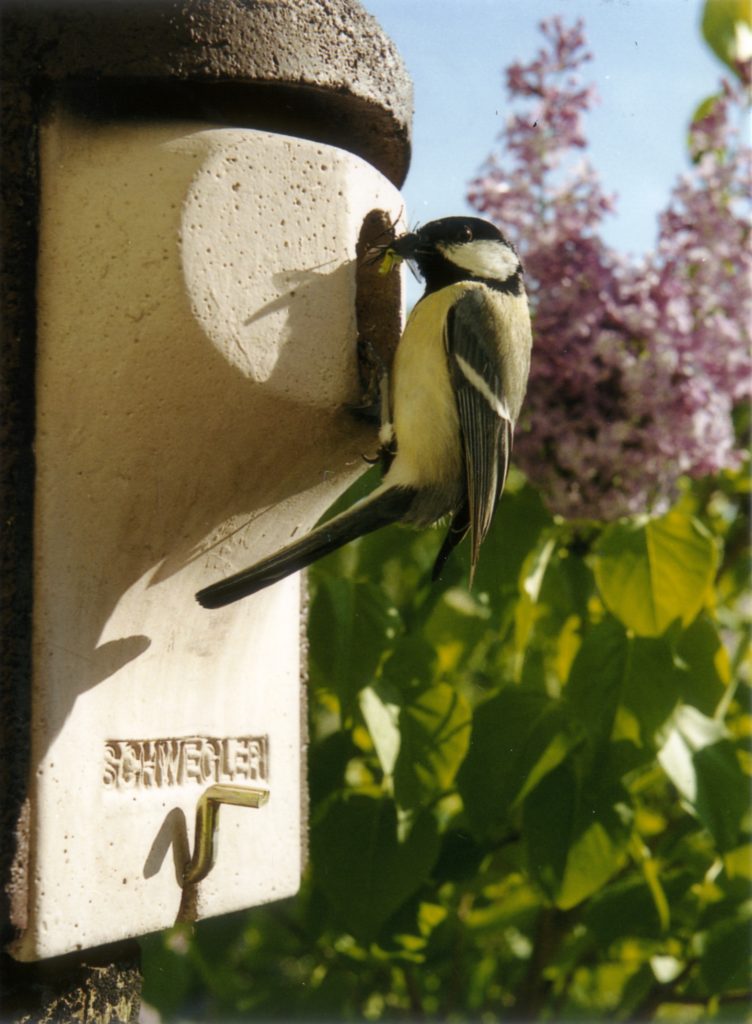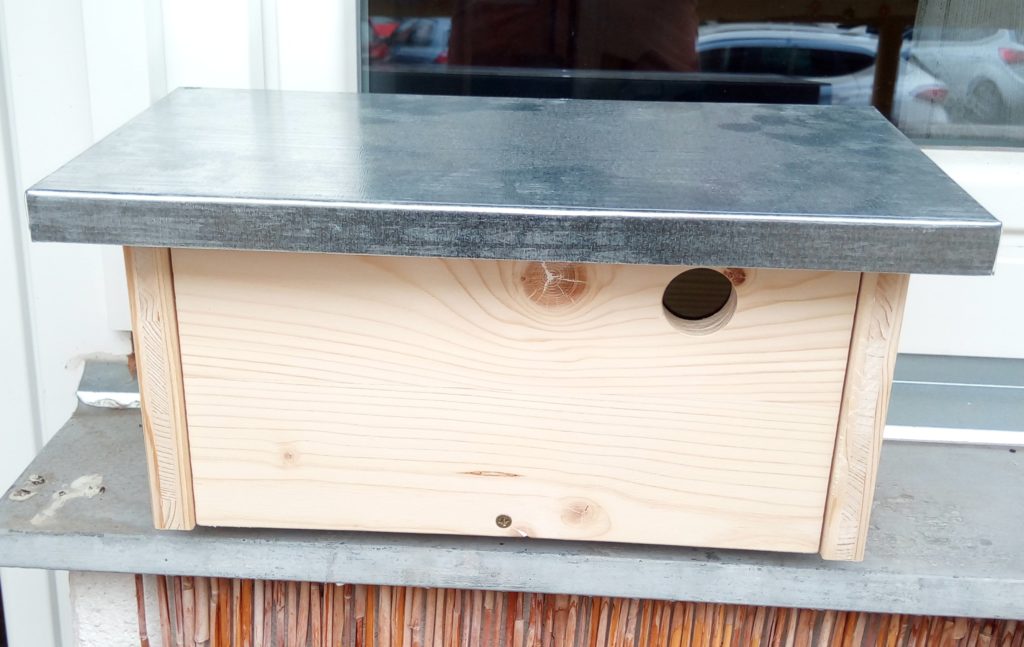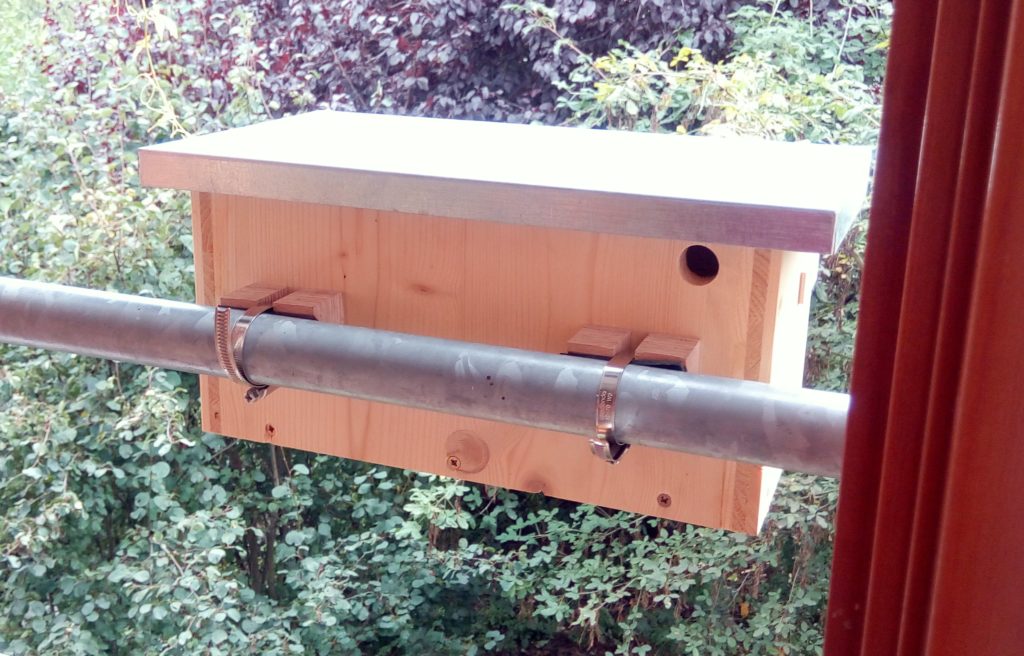Protecting birds from cats during the nesting period
The numbers of birds are shrinking in towns and cities. Today, it’s almost impossible to see sparrows, once so abundant on the streets, but other small songbirds are vanishing away as well.
Most such species need cavities to nest in. Unfortunately, the number of such cavities is decreasing. Old hollow trees are disappearing from city parks, while avenues and lines of trees are being felled for various reasons. It will take decades for newly planted trees to be ready for birds to nest in, although this will only be possible if they don’t succumb to vandals, air pollution or the salting of roads.

Until recently, parks and gardens provided refuge to birds. But even there, large, mature fruit trees age, die off, and are gradually replaced. At best, they are replaced by dwarf trees, which are absent of suitable cavities, while the worst scenario is if ornamental shrubs and white cedars are planted instead. Sometimes allotments are cleared away, becoming sites for shopping centres and warehouses that seem surplus to requirements.
The cavities that birds still can find in cities or rural settlements are usually easy for cats to get to, while the number of cats is going up due to lack of responsibility by people. This concerns pets and feral cats that breed uncontrollably if left uncastrated.
In this grim situation, every newly installed nesting box is a very welcome event, whether it happens in public areas or on private grounds. However, it is necessary to make sure that such structures serve birds for reproduction, rather than dinner tables for cats, when choosing the location and structure of the box. It is impossible to persuade a cat to avoid hunting birds, so we humans have no other choice than protect birds if we want to hear bird song in future.
Fortunately, solutions exist and are neither complicated nor expensive.
Forget the perch
The first rule is that a nesting box shouldn’t feature a perch. Birds don’t need a perch at all, and the feature only aids predators by making it easier to grasp on to the box.
Even boxes without perches don’t keep chicks safe, because conventional wooden boxes are almost always attached to a tree trunk, which makes it easy for the cat to climb to the structure.
Cat Deterrent
This system is good for protecting a standard nesting box as well as a bird table on a tree. It also serves as protection for birds that don’t nest in boxes but in branches. It’s easy to use the individual wire elements to make an obstacle that slips around the trunk to stop cats (and other predators) from climbing above the device. Plastic guards are included at the ends of each piece of the chain, so there is no risk of injury to the cat should it try to get past the product. It can be fitted to trees with any size of trunk. It’s recommended that a minimum height of 2 m above the ground is observed to prevent personal injury.

Specially shaped anti-predator boxes
Wood-concrete boxes are also available on the market. These give birds perfect nesting conditions, but – unlike wooden boxes – can be shaped to better protect birds’ nests from predators. These structures make use of a vaulted front that prevents cats and martens from reaching the nest. Egg-shaped entrance holes also ensure enough light enters, so birds aren’t forced to build their nests high up, thereby preventing access by small carnivores.

Some of these boxes have an attachment system that enables them to hang from a branch, which again makes it difficult for predators to enter them. Further protection is facilitated by the very steep angle of the roof, which makes hunting difficult for predators, whether they target the parents or offspring.
A fundamental advantage of the wood-concrete boxes is that they are extremely durable (the guaranteed life is over 25 years), so hundreds to thousands of new birds can hatch and sing in every such structure if the boxes are cleaned after use.
Wall- or shed-mounted nesting boxes
Cats or martens can’t climb up smooth vertical surfaces. These are perfect sites for nesting boxes suited for installation directly on the wall of the house, while it’s even possible to make such cavities directly into a wall or the outside insulation layer of a house. These are favoured by sparrows. Even species like swifts used to nest in slots between prefabricated panels, which are less common as prefabricated high-rise buildings are often insulated for heat, so spaces like those detailed above are greatly needed.
Swifts return to the same nesting spaces every year, so many of them become homeless every spring. The numbers of swifts, birds with an amazing capacity for flight and that keep troublesome insects in check, are shrinking dramatically as well; it’s child’s play to install a nesting box for swifts on the exterior of a house, or on a balcony of a block of flats.

Nesting boxes designed for balconies and handrails
A new range of boxes have been prepared suitable for those living in newly insulated apartment buildings operated by a cooperative, where drilling is not permitted for reasons of avoiding damage to the facade and not voiding any warranty.
Ordinarily, placing a bird box on a window sill would not be a good idea as strong winds can cause the box to fall and potentially hit a passer-by. Indeed, installing a standard bird box on a balcony railing is often a rather complicated matter.
We at Zelená domácnost, however, believe that anything is possible when one puts one’s mind to it. Quite simply, there is a need to increase dramatically the number of nesting spaces in urban areas. As a result, we have devised and manufactured a series of bird boxes for tits, sparrows, swifts and the like in cities. They are designed to overcome the usual challenges involved in installing them. The specifications for them were obvious from the outset. Mounting a unit needs to be a simple operation, and it must be of good quality and durable to last many years. Our endeavour paid off.
Window sill boxes
The boxes for placement on window sills have adjustable feet to compensate for the angle of the sill and a plastic mesh on the rear (an insulating mesh for external walls), which allows the box to be fitted simply by putting the net through an open window and then closing it so the box hangs; this works even for plastic-framed or EURO windows. This prevents the box from falling off the sill. The window is not damaged in any way as a result and it does not affect any of its insulation and sealing qualities.

Bird boxes on balcony railings
The other design of box for the same purpose is easy to attach to both horizontal and vertical handrails by utilizing cable/zip ties. Points for these are located at the rear and base of the box. Consequently, they fit to almost any balcony. (For railings of unusual dimension, the method for attachment needs to be adjusted correspondingly).

To make the bird nesting boxes even more appealing to home owners, a hole in the rear allows for optional installation of a webcam. This makes it possible to view the activity in the box on the window sill or balcony from the comfort of one’s living room.
All the boxes are made from wooden boards manufactured with the aid of environmentally-friendly bonding agents. The individual parts are joined together by screws in order for it to last a very long time. The roofing is zinc-plated to ensure a lengthy service life.
Each of us can definitely help. Owners of gardens, houses, flats with balconies and window sills. A company that installs nesting boxes on its own building can easily and cheaply prove to the public that it cares about the environment around its headquarters.
Such help certainly pays off since bird song is pleasant to hear whether at home or work.
Petr Dobrý
